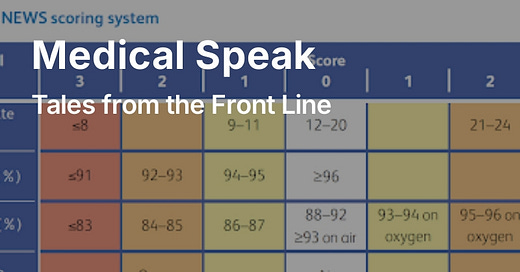“Do you need blue lights and sirens?” says the voice at the end of the phone.
The call handler knows I’m a health professional as I have a direct number that bypasses the need to use 999.
“I need a level 2, 18-minute response,” I tell the emergency medical dispatcher.
“OK, what's the reason for the ambulance?”
“The patient has a suspected DVT and is unwell and high risk for a PE and needs admission,” I say.
“What's the NEWS Score,” asks the dispatcher.
Medical terms can often be baffling. Saying "Deep Vein Thrombosis" or "Pulmonary Embolism" wastes time.
The National Early Warning Score (NEWS) determines a patient's degree of illness using six physiological findings and one observation.
There's no substitute for experience and good history taking, but once you have decided what to do next, the NEWS helps convey information in a standard way about how unwell the patient is.
The NEWS is based on a simple scoring system for six routine physiological measurements.
respiration rate
oxygen satu…
Keep reading with a 7-day free trial
Subscribe to Trust the Evidence to keep reading this post and get 7 days of free access to the full post archives.



